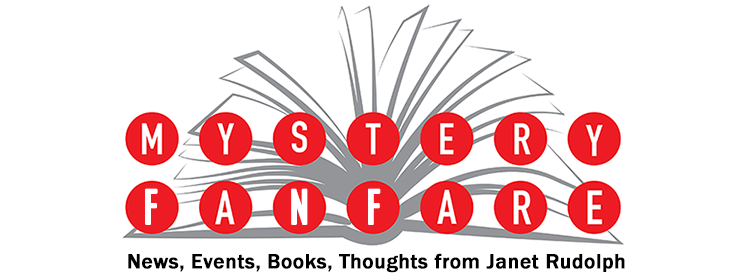 From Laurie R. King, Guest Blogger
From Laurie R. King, Guest Blogger
Laurie R. King is the Edgar award winning, New York Times bestselling author of the Mary Russell series of historical mysteries, the modern police series of Kate Martinelli, and a number of standalones. Her web site (www.LaurieRKing.com) is celebrating the publication of her ninth Mary Russell novel, The Language of Bees, now in stores everywhere.My background is theology, namely, the Old Testament (the story-teller’s source-book.) After I had my MA, I looked at the employment possibilities for a person with my qualifications (sic…) and turned from a life of God to a life of crime.
Let me begin by saying that it is truly extraordinary how often one’s characters share one’s interests. Mary Russell is forever finding herself in a situation where her knowledge of the Bible, both Hebrew (A Monstrous Regiment of Women) and Greek (A Letter of Mary) comes in very handy. The second Kate Martinelli (To Play the Fool) finds that San Francisco cop face to face with a Holy Fool, as in the next one (Night Work) she meets modern-day Kali worshippers. Since my own background includes first a BA thesis on the Holy Fool, then an MA thesis on “Feminine Aspects of God in the Old Testament,” well, it’s nothing short of amazing how often I find myself working snippets of research past into the stories.
Take the current book, The Language of Bees. This is the ninth outing for Mary Russell and Sherlock Holmes, and in the course of a complex case involving Bohemian artists, Shanghai natives, and what appears to be Druidic human sacrifice, they meet a man who wrote his own Bible, calling it Testimony.
The problem is, religion is a touchy subject in the publishing industry. Not, I have found, that readers themselves are offended, but publishers are convinced they will be, just as publishers are convinced that green book covers or plots set in Australia co

ndemn a book to obscurity.
So, what in the first draft of The Language of Bees was two full chapters of excerpts from Testimony, became whittled down in subsequent drafts. Two shorter chapters were still too much, so I chopped the material into forty segments and placed them at the beginnings of each chapter, then trimmed them into shorter segments, until finally, Testimony was reduced to forty brief lines decorating the chapter heads. I fought each step of the way, because the material was essential for, if nothing else, the clues it contained.
The problem was, that kind of religious document is often more than a little tedious. And since I do nothing halfway, I got into the spirit of the thing and made Testimony both pompous and long-winded, the very essence of religious tedium. Battle as I might for its inclusion, my argument based on the idea that the reader would skim over it lightly, thus miss the clues, which would permit me to claim that I had played fair with them, I lost. Somehow my editor couldn’t get past the “readers skimming over it lightly” part. She, unfortunately, had also heard Elmore Leonard’s famous dictum to cut all the parts that readers skim over.
So, bit by bit, Testimony‘s twenty or so pages were reduced to forty brief (but, one hopes, evocative) lines, and readers would have had to trust the narrator, Mary Russell , when she declares how tedious the material is.
Except for the Internet. Thanks to a web site that will soon require an entire server to host it,
Testimony is now available online for an adoring public. My brother-in-law even played with it on Photoshop to make it look like an old facsimile, which makes it even more fun. I have already signed half a dozen of the things on my current book tour.
And you know? My editor was right. True, she’s always right, but in this case she was righter than usual. The book reads better with Testimony flitting at the corner of the reader’s vision. For every reader who would have loved to have the material included, there will be twenty who are, all unknowing, breathing a sigh of relief.
And twenty years from now when The Language of Bees is required reading in all high schools? I can do an anniversary edition and restore Testimony to its rightful place in the text, and successfully bore a future generation’s readers into ignoring its clues.
**********



































